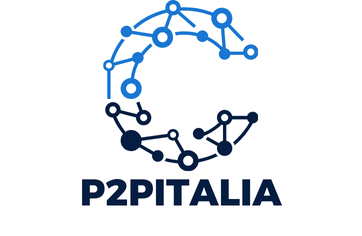In an age where digital communication dominates, ensuring privacy is essential. End-to-end encryption is the key to safeguarding your messages from prying eyes. This guide will walk you through the steps to implement robust encryption methods, offering practical tips and expert insights along the way. Discover how to secure your mobile messaging experience, protecting your conversations and personal data effectively. Your privacy matters—learn how to master mobile messaging today.
Overview of Mobile Messaging Technologies
Mobile messaging has transformed the way we communicate, evolving rapidly over the past decades. From the early days of SMS to the sophisticated apps we use today, messaging technologies have greatly enhanced our ability to connect with others. Initially, communication systems relied on simple text-based services. However, with the advent of smartphones, mobile messaging platforms have integrated multimedia capabilities, enabling users to send images, videos, and voice notes.
In the same genre : How do you set up a disaster recovery plan for a Kubernetes cluster in a multi-cloud environment?
The evolution of mobile messaging has been driven by key technologies such as internet protocol (IP) networks, which allow for real-time data transmission. Encryption technologies have also played a crucial role, ensuring that messages remain private and secure. Moreover, advancements in artificial intelligence have led to the development of chatbots and smart replies, making communication more efficient.
Today, popular mobile messaging applications like WhatsApp, Telegram, and Signal offer a range of features beyond basic texting. These apps provide end-to-end encryption, group chats, and multimedia sharing, catering to diverse user needs. Additionally, they often include functionalities like voice and video calling, enhancing the overall communication experience. As communication systems continue to advance, mobile messaging technologies are expected to become even more integrated into our daily lives, offering new ways to stay connected.
Also read : Top Strategies to Boost Your WordPress Site”s Security: Essential Techniques You Should Know
Understanding End-to-End Encryption
In the realm of mobile messaging, end-to-end encryption (E2EE) is a pivotal technology ensuring data security. At its core, E2EE means that messages are encrypted on the sender's device and only decrypted on the recipient's device. This ensures that no third parties, including service providers, can access the message content during transmission.
How End-to-End Encryption Works
When a message is sent using E2EE, it is transformed into a scrambled format using cryptographic keys. These keys are unique to the communicating parties and are stored only on their devices. As a result, even if the message is intercepted, it remains unintelligible without the correct decryption key. This process provides a robust layer of security, protecting sensitive information from potential breaches.
Comparison with Other Encryption Methods
Unlike other encryption methods, such as transport layer encryption, which only secures data between the user's device and the service provider's server, E2EE covers the entire communication chain. This ensures that data remains confidential from start to finish. While transport layer encryption protects data in transit, it does not prevent service providers from accessing the data, making E2EE a superior choice for privacy-conscious users. In today's digital age, understanding and utilizing E2EE is essential for safeguarding personal communications.
Implementing End-to-End Encryption in Mobile Messaging
In today's digital landscape, implementing end-to-end encryption in mobile messaging is crucial for ensuring robust messaging security. Developers must focus on integrating effective encryption implementation methods to safeguard user communications.
Step-by-step Guide for Developers
Developers aiming to incorporate end-to-end encryption should start by understanding the specific security protocols involved. Initially, they need to generate cryptographic keys unique to user devices. These keys are essential for encrypting and decrypting messages. The next step involves creating secure channels for key exchange, ensuring that no unauthorized parties can intercept them.
Tools and Libraries for Encryption
Several tools and libraries can assist in encryption implementation. Popular choices include the Signal Protocol, which provides a robust framework for secure messaging. Additionally, libraries like Libsodium and OpenSSL offer comprehensive cryptographic functions, streamlining the development process.
Integration with Existing Messaging Applications
Integrating encryption into existing messaging platforms requires careful planning. Developers should adhere to best practices, such as minimizing data exposure and regularly updating security features. Common challenges include handling backward compatibility and managing server load. Troubleshooting often involves addressing issues like key synchronization and latency.
By following these guidelines, developers can enhance messaging security, providing users with a reliable and private communication experience.
Best Practices for Mobile Messaging Security
Ensuring messaging security is crucial for protecting user privacy and maintaining secure communications. Implementing best practices can significantly enhance security measures.
User Education and Awareness
Educating users about potential security threats is a vital step in safeguarding their privacy. Users should be informed about recognizing phishing attempts, avoiding suspicious links, and understanding the importance of encryption. By promoting awareness, users become active participants in maintaining their own security.
Regular Updates and Patch Management
Keeping software up-to-date is essential for addressing vulnerabilities. Developers must ensure that mobile messaging apps receive regular updates and security patches. This proactive approach helps mitigate risks associated with outdated software and strengthens overall messaging security.
Importance of Strong Authentication Methods
Strong authentication methods are critical for protecting user accounts. Implementing two-factor authentication (2FA) adds an extra layer of security by requiring a second form of verification. This method significantly reduces the risk of unauthorized access. Additionally, encouraging users to create complex, unique passwords further enhances security.
Incorporating these best practices into mobile messaging platforms not only protects user privacy but also fosters trust. By prioritizing secure communications, developers can offer a safer and more reliable messaging experience.
Legal and Ethical Considerations
Navigating the landscape of encryption laws and privacy regulations is essential for developers working on mobile messaging technologies. Globally, encryption regulations vary significantly, reflecting different governmental approaches to balancing security and privacy. In some countries, stringent laws require companies to provide decryption capabilities to law enforcement, while others support robust encryption without backdoors.
Legal Implications of Implementing Encryption
Implementing encryption in messaging apps involves understanding the legal frameworks within which these technologies operate. Developers must ensure compliance with regional privacy regulations to avoid legal repercussions. This includes adhering to data protection laws like the General Data Protection Regulation (GDPR) in Europe, which mandates transparent data handling practices and user consent.
Ethical Considerations in User Privacy
Ethically, developers face the challenge of protecting user data while respecting privacy rights. The ethical implications of encryption revolve around ensuring that user communications remain confidential and secure from unauthorized access. Developers should prioritize ethical data protection practices, such as minimizing data collection and implementing strong encryption standards.
Balancing legal requirements with ethical considerations is crucial in the development of secure messaging applications. By understanding the complexities of encryption laws and prioritizing user privacy regulations, developers can create platforms that respect both legal mandates and ethical standards.
Case Studies of End-to-End Encryption Implementation
Exploring real-world applications of end-to-end encryption reveals significant insights into its effectiveness and challenges. Many popular messaging apps have successfully integrated this technology, ensuring user privacy and security.
Successful Implementations in Popular Messaging Apps
One notable example is WhatsApp, which has implemented end-to-end encryption for all messages since 2016. This has become a benchmark for encryption success stories, demonstrating the feasibility of secure communication on a large scale. Similarly, Signal, renowned for its robust security features, has gained a reputation for prioritizing user privacy through comprehensive encryption methods.
Lessons Learned from Encryption Failures
However, not all implementations have been flawless. Some platforms faced setbacks due to inadequate encryption practices, leading to potential vulnerabilities. These case studies highlight the importance of rigorous testing and continuous updates to maintain security standards.
Impact on User Trust and Engagement
The adoption of end-to-end encryption has significantly impacted user trust and engagement. Users increasingly prefer apps that prioritize their privacy, leading to higher retention rates and positive brand perception. By examining these real-world applications, developers can learn valuable lessons to enhance their own encryption strategies, ultimately fostering a secure and trustworthy communication environment.
Tools and Resources for End-to-End Encryption
In the realm of messaging security, selecting the right encryption tools is crucial for developers aiming to implement robust end-to-end encryption. Various software solutions and libraries are available to streamline this process and enhance security protocols.
Popular Encryption Tools and Libraries
Several well-regarded encryption tools are widely used in the industry. The Signal Protocol is a standout, offering a comprehensive framework for secure messaging. Additionally, Libsodium and OpenSSL provide extensive cryptographic functions that facilitate the development of secure applications. These tools are essential in creating a foundation for effective messaging security.
Resources for Further Learning and Development
Developers seeking to deepen their understanding of encryption tools can access numerous resources. Online platforms offer courses and tutorials, covering the intricacies of end-to-end encryption. Books and research papers also provide valuable insights into advanced encryption techniques and best practices.
Community Support and Forums
Engaging with developer communities and forums can be invaluable. Platforms like Stack Overflow and GitHub host discussions and collaborative projects, allowing developers to share experiences and troubleshoot challenges related to encryption tools. Community support ensures that developers stay informed about the latest updates and innovations in messaging security resources.
Potential Pitfalls of End-to-End Encryption
While end-to-end encryption (E2EE) is critical for securing communications, it is not without its challenges. Misconfigurations can lead to severe security vulnerabilities, undermining the effectiveness of encryption. For instance, improper key management or weak cryptographic algorithms can expose systems to potential breaches. Ensuring correct configuration is paramount to maintaining robust messaging security.
User management also presents challenges in E2EE systems. Users may inadvertently compromise security by sharing devices or failing to update software. Educating users about best practices is essential to mitigate these risks. Additionally, managing user keys securely across devices without compromising encryption is a complex task that must be handled with precision.
Legal compliance further complicates encryption practices. Different jurisdictions have varying requirements, and failing to adhere to them can result in legal repercussions. For example, some regions mandate decryption capabilities for law enforcement, potentially weakening the encryption's integrity. Developers must balance these legal demands with the need for strong security measures.
By addressing these encryption pitfalls, developers can enhance the security and reliability of their systems. Understanding these common mistakes and vulnerabilities is crucial for creating secure and compliant mobile messaging applications.
Future Trends in Mobile Messaging and Encryption
As technology evolves, the future of messaging is set to transform with emerging technologies and encryption trends. One significant development is the integration of blockchain technology, which promises to enhance security through decentralized networks. This could revolutionize how data is stored and shared, offering a new layer of protection against unauthorized access.
Emerging Technologies in Mobile Messaging
The rise of 5G networks is expected to improve the speed and reliability of mobile messaging, enabling real-time communication with minimal latency. Additionally, the integration of augmented reality (AR) in messaging apps could offer immersive experiences, transforming how users interact with digital content.
Predictions for the Evolution of Encryption Standards
Encryption standards are anticipated to evolve to combat sophisticated cyber threats. Quantum computing poses a potential challenge to current encryption methods, prompting the development of quantum-resistant algorithms. These advancements aim to ensure that sensitive data remains secure, even against future computational capabilities.
The Role of AI and Machine Learning in Enhancing Security
Artificial intelligence (AI) and machine learning are poised to play a crucial role in enhancing messaging security. By analyzing user behavior patterns, AI can detect anomalies and potential threats in real-time, providing proactive protection. Machine learning algorithms can also optimize encryption processes, ensuring efficient and secure communication.











